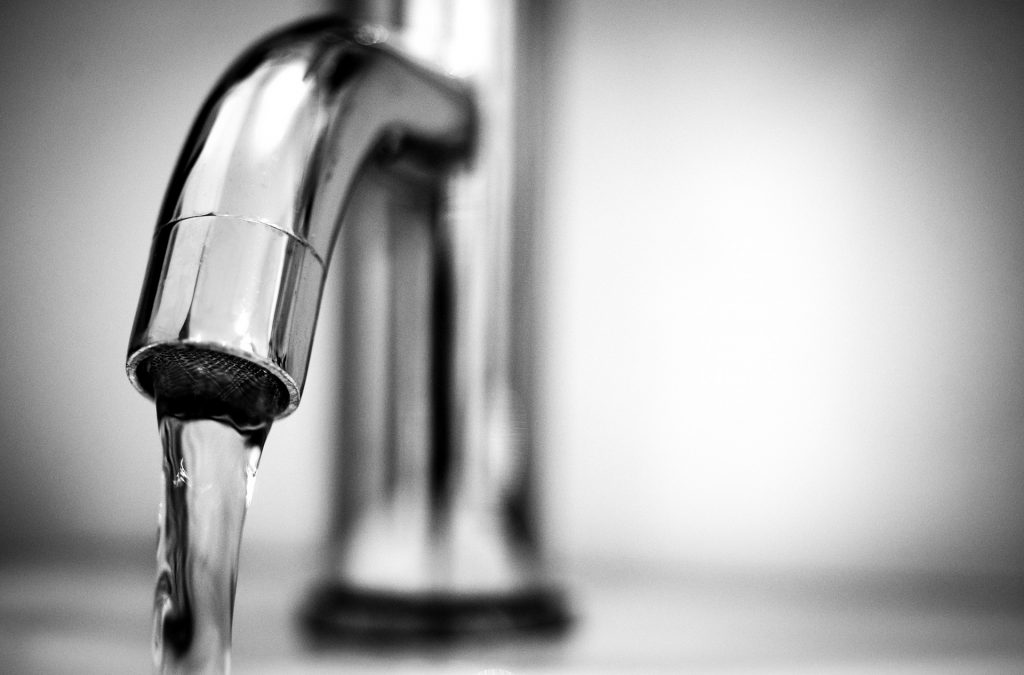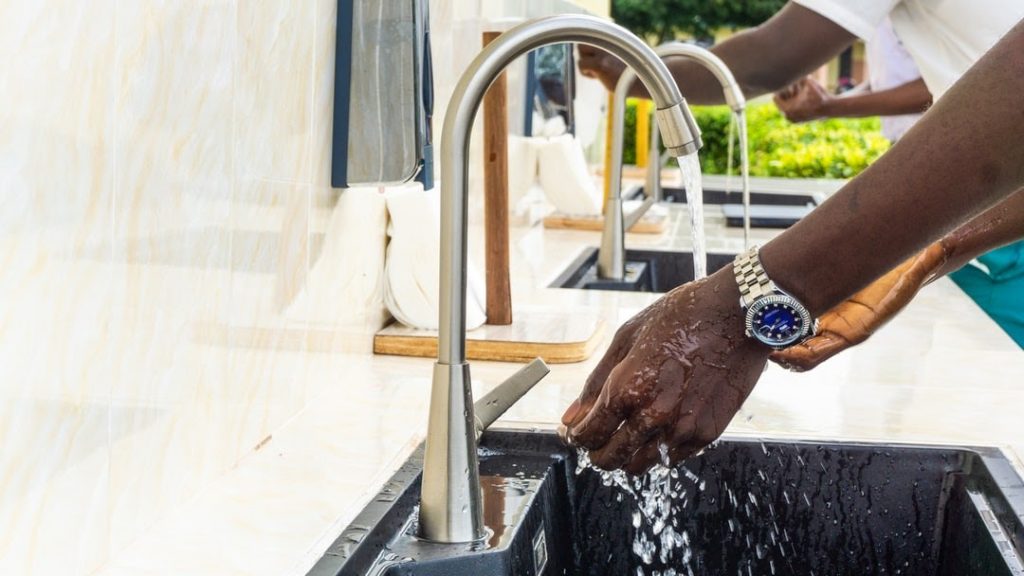As water is heated, it expands and causes pressure to build up. In earlier water heater systems, this pressure forced the water in the tank to drain into its original water supply source. Modern plumbing systems don’t allow this kind of backflow. A check valve keeps this kind of wastewater from within your household from backing up into the water supply and potentially fouling the incoming water supply.
Read on to learn more, or contact an American Home Water and Air expert to discuss your needs further.
What Does a Hot Water Heater Expansion Tank Do?
An expansion tank is a smaller tank that attaches to the water supply pipe that feeds water to your water heater. This additional tank provides a place for the thermal expansion of water to take place so that the pressure doesn’t become excessive, damaging fixture valves, supply line joints, or even the water heater.
How Do I Know if I Need a Hot Water Heater Expansion Tank?
The majority of households have a check valve on their main water supply line, but building requirements didn’t previously require expansion tanks. If your plumbing is designed in such a way that pressure build-up is not an issue for you, you may not need an expansion tank.
However, if you are having issues with the washers in your plumbing fixtures requiring increasingly frequent replacement due to damage or if your water heater is leaking around the relief valve, an expansion tank might well be something that will save you money and headaches in the long run. It is far better to take preventative measures now than to incur the cost of expensive repairs once the damage is done.
What If I Don’t Install a Hot Water Heater Expansion Tank?
Choosing not to install an expansion tank for a hot water heater is certainly up to each homeowner to decide. Before you make your decision, you should fully understand what is happening in your water heater. Think of it as a pressure cooker. Most of us these days have never used one, but plenty of us are familiar with them or have seen our parents or grandparents use one.
As the contents of the cooker heat up, the pressure builds. The small gauge on top of the cooker lets it escape so that it does its job inside the cooking but not so much that the cooker explodes. If your water heater has this kind of pressure building up inside and there is a valve preventing the excess pressure from pushing some water out of the way to make space, then it is trapped there. A water heater doesn’t expand, so where will it go?
Let’s take a 50-gallon water heater as an example. If you heat this amount of water to 120 degrees Fahrenheit, it will expand to about 52 gallons. With nowhere to go, it puts more pressure on the surrounding hardware, causing more wear and tear and possible failures. Now, like the pressure cooker, your water heater has a pressure-relief valve. If the pressure gets so high that it is in danger of causing a water heater explosion, this relief valve will kick in to offset some of the pressure.
However, there can still be plenty of damage done by this assault from the water pressure against the unyielding tank within your water heater. Over time, it will get worse, causing issues that you will eventually have to address with repairs or replacements.
How Much Space is Needed For a Water Heater Expansion Tank?
Because this addition to your water heater is nothing more than an empty chamber that gives expanding water a place to go, it doesn’t take up much space at all. As the expanded water flows toward the top of the water heater, it will flow into an insulated pipe leading to the expansion tank which needs to be only large enough to accommodate the excess.
It is unlikely that your expansion tank will be any larger than a propane canister like the ones you hook to your outdoor barbecue grill. It is insulated to keep the water that enters hot. Any water that collects there during the pressure build-up will drop back into the water heater once the pressure subsides. Most expansion tanks are installed on top of the existing water heater, so they will take up no additional floor space.
Is a Hot Water Heater Expansion Tank Legally Required?
No, not currently. However, if you live in a home with a closed water system where a check valve prevents backflow, then you should definitely install an expansion tank to prevent damage. For those living in older homes with open plumbing systems where no such valve exists, the pressure is relieved by flowing back to the supply lines.
So, you are at a much greater risk for damage and failures if you are living in a home with a closed system. Your first step toward deciding what’s best for you (and your plumbing) is to know which system you have. If you aren’t sure, it is wise to contact a professional for assistance.
How Do I Get a Hot Water Heater Expansion Tank?
If you think you need a hot water heater expansion tank, the best thing to do is contact a professional plumber for an evaluation and estimate. A licensed plumbing expert can check your home’s water pressure levels and examine your water heater to determine if you could benefit from adding an expansion tank based on your unique circumstances.
How Much Will a Hot Water Heater Expansion Tank Cost?
The cost of an expansion tank, including installation, will run you somewhere between $100 and $400 depending on what kind of water heater you have and what must be done to accommodate the added tank. If you are living in a home with high water pressure, this cost may well be nominal compared to what it may cost overall to address repeated repairs or a complete failure. If you’d like to learn more about what can be done to ensure your water heater and plumbing system would benefit from a hot water heater expansion tank installation, contact AHWA to learn more or schedule an appointment online to receive an evaluation of your system. American Home Water & Air is the most trusted air conditioning, heating, and plumbing expert in Phoenix AZ specializing in HVAC and Plumbing services such as installing tankless water heater in Phoenix and much more. Also, check out our other articles on water heater topics such as “Adjusting water heater settings“.
[related_posts_by_tax posts_per_page="3" format="thumbnails" image_size="medium"]









